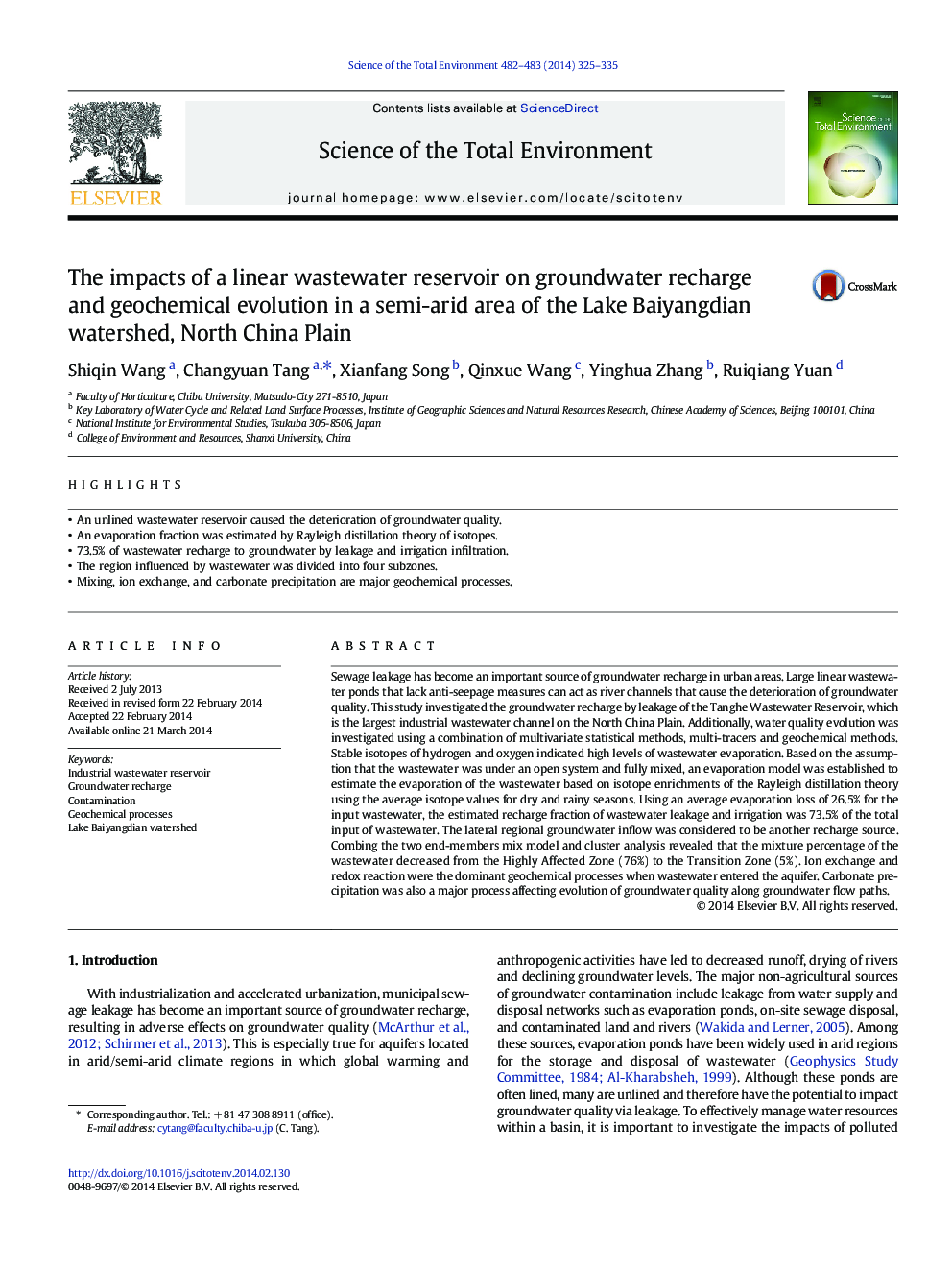| Article ID | Journal | Published Year | Pages | File Type |
|---|---|---|---|---|
| 6330768 | Science of The Total Environment | 2014 | 11 Pages |
Abstract
Sewage leakage has become an important source of groundwater recharge in urban areas. Large linear wastewater ponds that lack anti-seepage measures can act as river channels that cause the deterioration of groundwater quality. This study investigated the groundwater recharge by leakage of the Tanghe Wastewater Reservoir, which is the largest industrial wastewater channel on the North China Plain. Additionally, water quality evolution was investigated using a combination of multivariate statistical methods, multi-tracers and geochemical methods. Stable isotopes of hydrogen and oxygen indicated high levels of wastewater evaporation. Based on the assumption that the wastewater was under an open system and fully mixed, an evaporation model was established to estimate the evaporation of the wastewater based on isotope enrichments of the Rayleigh distillation theory using the average isotope values for dry and rainy seasons. Using an average evaporation loss of 26.5% for the input wastewater, the estimated recharge fraction of wastewater leakage and irrigation was 73.5% of the total input of wastewater. The lateral regional groundwater inflow was considered to be another recharge source. Combing the two end-members mix model and cluster analysis revealed that the mixture percentage of the wastewater decreased from the Highly Affected Zone (76%) to the Transition Zone (5%). Ion exchange and redox reaction were the dominant geochemical processes when wastewater entered the aquifer. Carbonate precipitation was also a major process affecting evolution of groundwater quality along groundwater flow paths.
Related Topics
Life Sciences
Environmental Science
Environmental Chemistry
Authors
Shiqin Wang, Changyuan Tang, Xianfang Song, Qinxue Wang, Yinghua Zhang, Ruiqiang Yuan,
